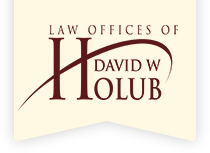Error in Google Maps Leads to Crash
I’m David Holub, an attorney focusing on personal injury law in northwest Indiana.
Welcome to Personal Injury Primer, where we break down the law into simple terms, provide legal tips, and discuss personal injury law topics.
In today’s episode, we’ll take a look at the issue of liability when an error in Google Maps or any other mapping navigation program leads to a crash.
Suppose someone is out driving in an unfamiliar neighborhood and using Google Maps to navigate as you drive home. It’s nighttime and quite dark out, with no street lights around.
Let’s say that Google Maps directs that individual to drive across a particular bridge, but unbeknownst to him, that bridge collapsed several years ago.
Suppose that person proceeds to drive over that bridge to which Google Maps directed him, but then crashes into the water and drowns. Can Google Maps be held liable for the man’s death?
Sometimes it takes a while for the law to catch up to address issues and concerns attributable to advances in technology.
But, if we apply existing legal principles, we might be able to predict how a court might decide a question based on facts like these.
This topic is somewhat related to one we discussed earlier in episodes 39 and 131 when we talked about autonomous robotic cars.
Humans program a navigation program like Google Maps to direct other humans where to go to reach a destination.
While the program doesn’t literally drive you to your destination like an autonomous car does, it gives you directions or commands or otherwise “steers” you where to go to get to your destination.
In our previous discussions about autonomous cars, we speculated that the law would hold the owners of such vehicles legally responsible for driving mistakes and that the law would hold manufacturers accountable for manufacturing defects contributing to causing a crash.
Indiana follows the legal principle of comparative fault, which means that sometimes liability can be attributed to both the plaintiff, the party that was harmed, and the defendant, so long as the plaintiff’s fault is not found to be greater than 50%.
So in the above example, it is possible that the driver, the person who was killed when he drove off this collapsed bridge that Google Maps directed him to drive on, could be found partially responsible for his death.
The defense could say that a reasonable person would look carefully where he was driving and not blindly follow the instructions of Google Maps.
On the other hand, the plaintiff could say that even a reasonable person could have not realized that the bridge wasn’t there and had previously collapsed, especially if it was dark out and that person had never been to that area before and was unfamiliar with the location.
One relies more on navigation programs particularly in unfamiliar areas because you don’t need directions in the first place it’s a familiar area or route.
Another important fact to learn in such a case would be whether there were any warning signs on the road alerting drivers to the hazard up ahead.
Looking at the potential liability of Google Maps in our example, suppose Google Maps had knowledge that the bridge had collapsed, but that it never updated its directions accordingly.
Such facts would give rise to a good argument that Google Maps was negligent because it knew that drivers depended on the directions provided to get them safely to their destinations when they were in unfamiliar places and it knew this bridge had collapsed and wasn’t safe to direct people to use, yet it never updated its program and continued to instruct people to use a defunct bridge – a known danger.
If you or a loved one has been injured in a motor vehicle collision (whether caused by a person, a robot, or a navigation program) please call to speak with one of our attorneys about your situation.
I hope you found this information helpful. If you are a victim of someone’s carelessness, substandard medical care, product defect, work injury, or another personal injury, please call (219) 736-9700 with your questions. You can also learn more about us by visiting our website at DavidHolubLaw.com – while there, make sure you request a copy of our book “Fighting for Truth.”

Recent Comments